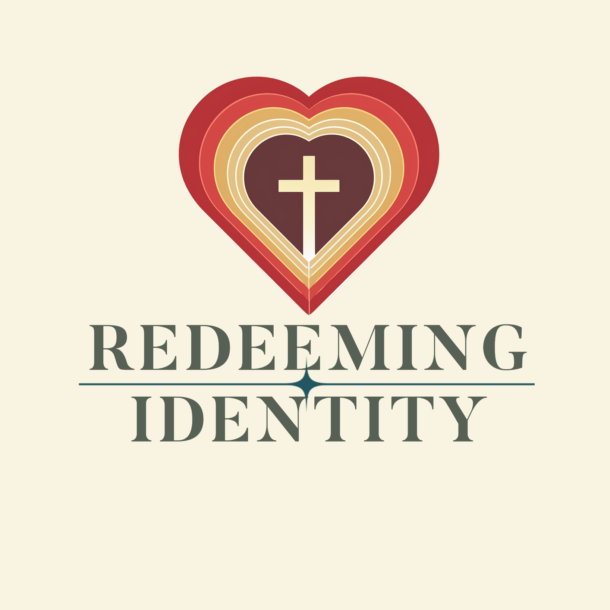What’s in a
Brand?
What’s your color?
When I moved to Austin, TX there were a lot of aspects of the central Texas culture that I needed to learn. One that I quickly observed was the people’s love of the color orange. Not just any orange, but a specific shade called “burnt orange.”
If you are not aware of this particular color, this is the signature color of the University of Texas of Austin. It is not just any shade of orange, but Texas’ official shade of orange, noted as Pantone® 159. It is a darker shade of orange with brown tones that has been officially and legally associated with UT since the 1960’s.
If you are in Austin on a Saturday where there is a home football game, you will experience what the world would look like if everything was a single color, burnt orange. Everywhere you look, people are dressed in this unique shade of orange, from dresses to shirts, socks and sneakers, hats and bandanas. You will see older men dressed in burnt orange sport coats with little kids in burnt orange jerseys and babies in burnt orange onesies.
Almost everyone in Austin proudly wears this unique color, except those that wear the maroon of the rival university, which is Pantone® 7421. Regrdless of whether they are an alumnus of the university, people wear this color to associate with the team, but even more with the other fans of the team. You can easily identity others that are fans of the University of Texas longhorns, through a single color. One time, while hiking in the Rocky Mountains, I was recognized by another fan by just the color of the band on my hat. Hook ‘em.
What’s a Brand?
The role of brands, logos, and colors in expressing aspects of our identity is not a new concept. We have used textiles, patterns, c0lors, and logos to declare who we are as long as clothing has been around.
In ancient Scottland, the colors and pattern in the tartan or plaid in the fabric worn identified the individual with a specific clan or family. I have a friend with Scottish heritage that wears a kilt on special occasions, to honor his lineage. The only issue is that his ancestors would be confused, since he is wearing different colors than they would have worn. His official clan colors are black on a yellow background, but he doesn’t want to look like a bumblebee, so he wears a kilt with other colors.
In today’s world, a brand tells a story about the individual or product, including what they stand for, the value that they bring, and why a consumer should select their product or service over another one. The brand extends to all the ways it can be presented, such as the color pallet, the typography, the logo, the music, and the language used in everything presented. It communicates to people what it is about at its core; the principles, perspectives, purposes, and priorities that define what it is about.
Sounds like it is trying to describe the identity of the individual, product, or service.
In the old west, a brand was a symbol that was put onto cattle or object to identify their association with a specific ranch. Just like a name, that brand carried with it the reputation and meaning associated with ranch and owners of the ranch. When people saw the brand, they knew what they could expect from the ranch. The brand carried with it the identity of the ranch, specifically the owners of the ranch.
Today’s brands still carry the weight of the identity of what they represent. The principles that they hold define what they believe as truth about themselves and others. Their target group is defined by the perspectives they used to view and interpret the world and their place in it. They define their purpose, what they want to accomplish or impact they want to make in the world, which provides the motivation for what they do. They ultimately have defined priorities, which help them make decisions.
In brands, we find more that just a simple way to identify one product from another. We apply meaning and identity to the brands.
Brands and Identity
The ability of my friend to wear a kilt of colors different from his clan is an acknowledgment of the freedom that individuals have these days to select their clothes to reflect their identity. We no longer have to wear a tartan to identify with a specific clan. Wearing a specific tie to identify with a school is not a requirement. A person from Japan can just as easily wear modern punk rock clothing from London as don native tribal patterns from southern Africa.
This freedom has opened the opportunity for individuals to use brands and logos as a mode of expressing their individual aspirational identity, or how they would like others to view them. We consciously or subconsciously collect brands that we believe show something about who we are or who we want to be.
This isn’t a criticism. We all do this. Through the brands that we select, we are visually telling others a bit about ourselves. Not just that we select that brand, but the identity associated with selecting each brand and the other people who also select the brand.
In one study of 1,000 people, over half of the people stated that the brands that they use or choose to associate with are important in demonstrating how they see themselves. Also, more than half of the people agreed that the brands that they see other people using communicate something about who they are. When asked about what brand represents who they are, the top responses included, the car they drive, the clothes that they wear, the food in their kitchen, and the organizations that they belong to.
Each logo below represents a brand. What principles, perspectives, purposes and priorities do you associate with these brands?
Automobile Brands:



Clothing Brands:


Take some time and think about this. The brands that we select represent something about us, our identity. By associating with these brands, we are associating with the principles, perspectives, purposes, and priorities represented by the brand. Our collection of brands are a reflection of who we are to those that are watching.
I am the Brand
Creating a brand, in simple terms, is creating an image that is used to represent the overall organization, product, or service. The experiences, emotions, and values that we associate with the brand impact our eventual appeal or rejection of it.
As followers of Jesus, we have been called to be the brand of God to the world.
Our original design was to be image-bearers of God, so that we would reflect the identity of God. As we have been restored to this original purpose, we are now called to bear God’s image in the world.
“In the same way, let your light shine before others, so that they may see your good works and give glory to your Father who is in Heaven.” Matthew 5:16
“Therefore, we are ambassadors for Christ, God making his appeal through us.” 2 Corinthians 5:20
We are the brand of God, where we are presenting who God is to His creation, so that they can believe in Him and choose Him above continuing to live independently from Him.
We regularly make decisions about what car to buy or what tax preparation software to use based on the brand and the associations that we have with that brand. Each interaction that we have with a brand builds associations that impact our perception of the brand.
There are several restaurant chains that my wife and I avoid going to because of our prior experiences with them. We understand that each restaurant is different, with different management and staff, so the experience with one restaurant may be different from another. The association of our experience with the brand keeps us from wanting to go to any restaurant associated with that specific brand.
We are the brand of God. The interactions that people have with us, influence how they perceive who God is. As they observe us, they determine from us the principles, perspectives, purposes and priorities of God. We represent God and who He is to others.
![Matthew 516 [widescreen]](https://redeemingidentity.com/wp-content/uploads/2025/01/Matthew-516-widescreen.png)
Becoming an Authentic Brand
An authentic brand is when the brand represents the principles, perspectives, purposes, and priorities that are true about the organization or person.
As the brand of God, we should desire to be an authentic brand, accurately representing who He is to those around us. This only occurs when our identity is aligned with His. When we are living out of the new identity that He created for us, rather than from the corrupted identity that we created.
Here are some steps that we can take to becoming an authentic brand representing God.
- Our first priority is to discover and know who God is. We are the brand of God, so we need to know Him, His identity. As His brand, we are representing His principles, His perspectives, His purposes, and His priorities, not our own. We need to know Him, so that He can show us how He wants us to represent Him.
- Allow God to transform our identity. God has given to us a new identity, made us a new creation. The problem is that we still struggle with living out of the old identity. We need to participate in the process of transforming our identity, where we submit to God, sacrifice our old identity, and allow God to substitute His new identity. This is a progressive process of transformation of our identity into who He created us to be.
- Recognize that we cannot completely represent all of who God is. We need others, the church, to better represent who God is. Each of us represent aspects of God’s identity, in unique ways. When we represent God together, focused on presenting Him, the world gets a better and more complete perspective of who He is and that they can also be a part of His plan.
- We will mess up in representing God. Because we continue to live out of our old identity, there will be times that we do not represent Him well. At those points, we need to be willing to acknowledge this to both ourselves, others, and God, which is part of being authentic. God still forgives and will continue to use as we allow Him to continue transform us.
We are God’s brand. Through our lives, others create an impression of who God is, both as we accurately represent God’s nature and as we fail and demonstrate God’s grace and forgiveness. What God is looking for are individuals who are willing to be His brand.
Your Response
If you would like to know more about receiving the new identity that God offers you, please take some time to hear about God’s Good News.

Time for Reflection
Read Exodus 20:7
The name of a person is like their brand, it is a simple representation of them.
With this understanding of the name of God, how does this relate to what we have discussed about us being the brand of God?
How important is it to have a correct representation of God?
Take some time to reflect on your perspective of who God is. Are you able to accurately reflect the identity of God.?
Spend some time praying and talking with God about the truths that you have learned and seeking how He wants you to incorporate them in your life.
Take a moment to watch the live performance of the worship song “This God He is our God” by Tommy Walker.
Pass it on!
If God has used this article to encourage or challenge you, please take some time to share it with others by sharing it on your facebook or other social media site. Also, please let us know how we can continue to help you discover who God is and who He created to you be.




0 Comments